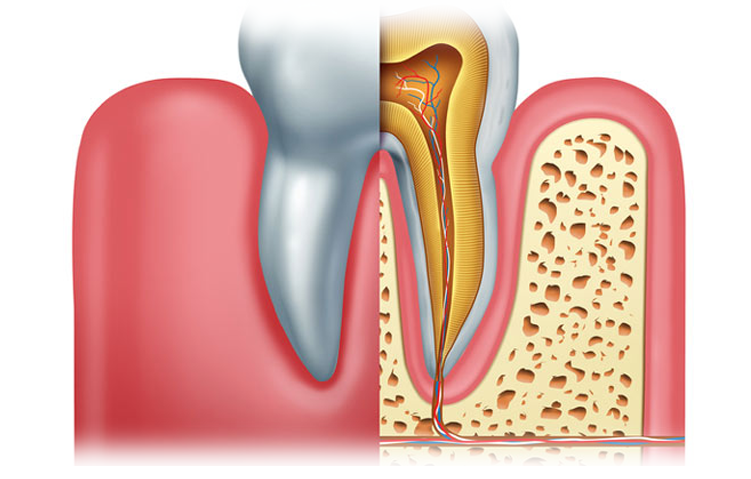Root Canals
Maintaining and restoring the vitality of your teeth is our core priority. Root canal treatment plays a vital role in this. It is carried out in the event of irreversible inflammation or the death of a tooth nerve. Although you may have heard or understood that root canal treatment can be painful, this is not its purpose. On the contrary, the goal of this surgery is to save severely infected teeth. Our dentists will remove bacteria and necrotic tissue in the oral cavity through this operation.
Modern technology and technology have developed root canal treatment into a relatively comfortable treatment method, usually does not require multiple visits to a dentist or endodontist.
Root canal treatment is usually recommended or required when teeth become infected. Due to long-term untreated injuries or tooth decay, the pulp inside the tooth may be infected by bacteria. Without treatment, the infection can become very serious, and tooth extraction may be required. Our dentist recommends this treatment method; visit Springs Dental clinic today, and they help you understand the effect of the operation and precautions after the operation.

A detailed guide to root canal treatment
There are four steps in root canal treatment. The treatment is usually completed in two sessions.
- The dentist uses a needle for local anesthesia to numb the teeth. The pain is usually felt during the injection. After the teeth are numb, the endodontist may place a rubber dam, which is a rubber cloth used to keep the teeth clean and dry during the operation.
- The dentist will then use a very small tool (small drill) to create an opening on the top of the tooth to gain access to the inside of the tooth. Next, the dentist will use a small file to remove the damaged and diseased pulp inside the tooth. The dentist will also use these files to reshape the tooth cavity and roots and flush the cavity with water to wash away any remaining pulp. The dentist may also place an antibacterial solution in the chamber to kill any remaining bacteria and reduce further infection risk.
- Once the cavity is thoroughly cleaned and dried, the endodontist usually fills it with a rubber material called gutta-percha. While you are waiting for the permanent crown to be installed, the dentist will seal the tooth’s borehole with a temporary filling.
- After a few weeks, the dentist will place a permanent crown or similar restoration on the tooth’s top to complete the treatment. Depending on your teeth’ natural condition, the dentist may need to place a small pillar in the root cavity to make the crown or restoration more stable.
- Postoperative
After root canal treatment, you must take good care of your teeth and gums. In addition to the twice-a-year tooth cleaning and examination, you may also need additional dentist treatment to perform an X-ray examination of the teeth after surgery to ensure that all signs of infection disappear. It is important to maintain good oral care habits at home, including brushing your teeth twice a day and using a toothpaste that can be antibacterial for 12 hours. Through careful care, the teeth after root canal treatment can remain healthy for life.







